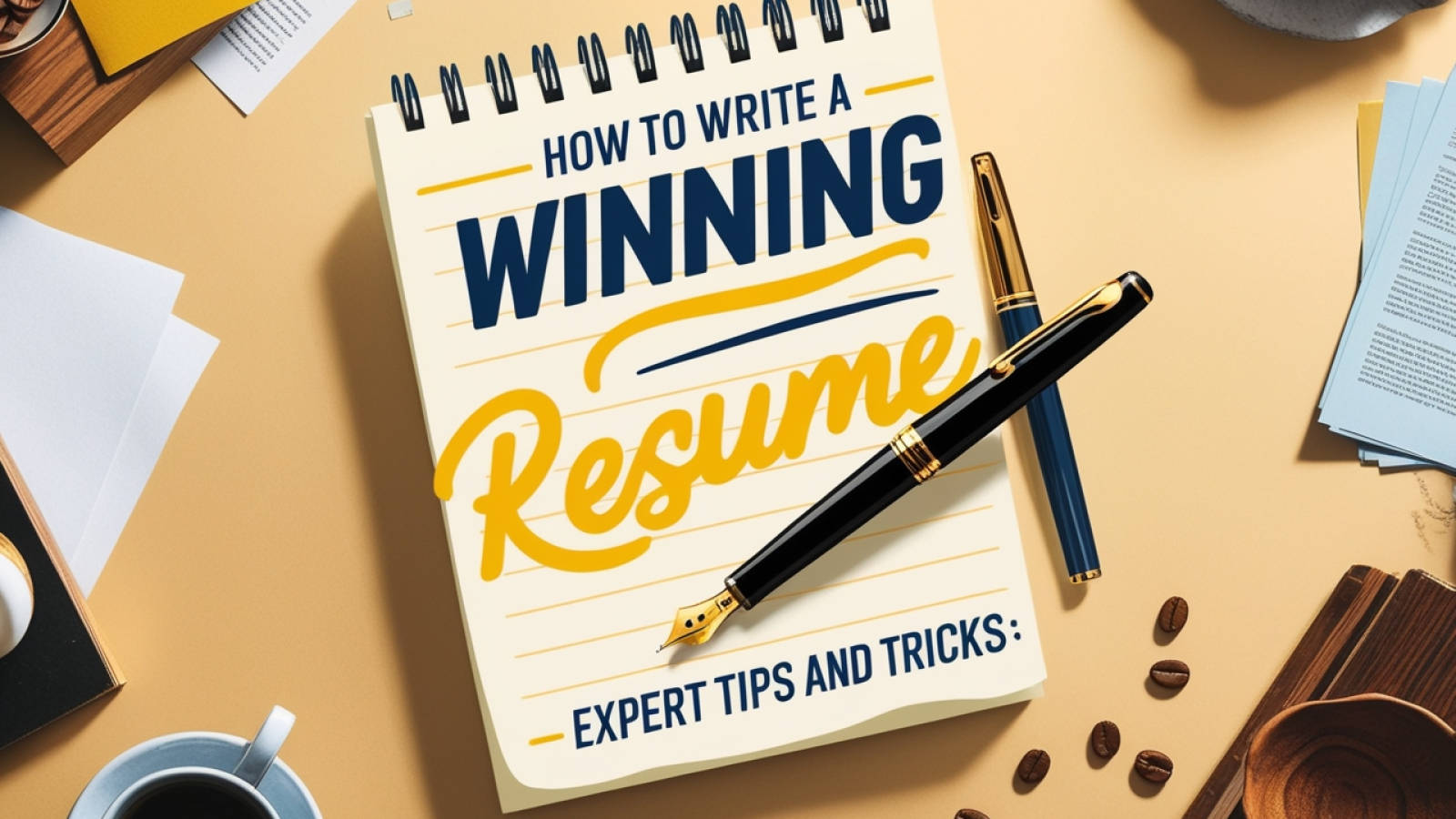Crafting a winning resume is a critical step in landing your dream job. Your resume is often the first impression you make on potential employers, so it’s essential to make it stand out. This article will provide expert tips and tricks to help you create a compelling and effective resume that highlights your strengths and achievements.
1. Start with a Strong Header
a. Include Essential Information
Your resume header should include your full name, phone number, email address, and LinkedIn profile. Ensure that your email address is professional.
b. Add a Professional Title
Include a professional title that reflects the job you are applying for. This helps immediately convey your professional identity.
c. Use a Clean Layout
Keep your header clean and simple. Avoid unnecessary graphics or designs that can distract from your information.
2. Write a Compelling Summary
a. Highlight Your Value Proposition
Your resume summary should succinctly describe who you are, what you bring to the table, and what you are looking for. It should be a brief statement (2-3 sentences) that grabs the reader’s attention.
b. Tailor It to the Job
Customize your summary for each job application. Highlight the skills and experiences that are most relevant to the job you are applying for.
c. Be Specific and Concise
Avoid vague statements. Be specific about your achievements and experiences. For example, instead of saying “experienced in project management,” say “5+ years of experience managing cross-functional teams and delivering projects on time and within budget.”
3. Focus on Your Achievements
a. Use Action Verbs
Start each bullet point with a strong action verb such as “achieved,” “led,” “managed,” “designed,” or “implemented.” This makes your achievements sound dynamic and impactful.
b. Quantify Your Results
Whenever possible, use numbers to quantify your achievements. For example, “increased sales by 20%” or “reduced costs by 15%.” This provides concrete evidence of your contributions.
c. Highlight Relevant Experience
Focus on experiences that are most relevant to the job you are applying for. Tailor each section of your resume to emphasize the skills and experiences that align with the job description.
4. Optimize for Applicant Tracking Systems (ATS)
a. Use Keywords
Incorporate keywords from the job description into your resume. This helps ensure that your resume gets past applicant tracking systems (ATS) and reaches human recruiters.
b. Keep the Format Simple
Use a clean, simple format with standard fonts like Arial or Times New Roman. Avoid using tables, columns, or graphics that can confuse ATS software.
c. Use Standard Headings
Stick to standard resume headings such as “Professional Experience,” “Education,” “Skills,” and “Certifications.” This makes it easier for ATS to parse your resume.
5. Highlight Your Skills
a. Include a Skills Section
Create a dedicated skills section where you list your key skills. This can include both hard skills (technical abilities) and soft skills (interpersonal abilities).
b. Match the Job Requirements
Highlight the skills that are most relevant to the job you are applying for. Use the job description as a guide to determine which skills to emphasize.
c. Provide Context
Whenever possible, provide context for your skills by mentioning how you have applied them in your previous roles. This demonstrates your practical experience with those skills.

6. Showcase Your Education and Certifications
a. List Relevant Degrees and Certifications
Include your highest degree and any relevant certifications. If you have a degree or certification that is particularly relevant to the job, consider placing it near the top of your resume.
b. Include Relevant Coursework
If you are a recent graduate or if your coursework is particularly relevant to the job, include a section highlighting relevant courses.
c. Mention Academic Achievements
Include any academic achievements such as honors, scholarships, or awards. This can help differentiate you from other candidates.
7. Include Professional Experience
a. Use Reverse Chronological Order
List your professional experience in reverse chronological order, starting with your most recent job. This format is preferred by most employers and makes it easy for them to see your career progression.
b. Focus on Achievements
Instead of just listing job duties, focus on your achievements in each role. Use bullet points to highlight specific accomplishments and the impact you made.
c. Be Concise
Keep your descriptions concise and to the point. Aim for 3-5 bullet points per job, focusing on the most significant and relevant achievements.
8. Add Volunteer Work and Extracurricular Activities
a. Highlight Relevant Volunteer Work
If you have volunteer experience that is relevant to the job you are applying for, include it on your resume. This can demonstrate your commitment and skills.
b. Include Leadership Roles
If you have held leadership roles in volunteer organizations or extracurricular activities, highlight these experiences. They can demonstrate your leadership abilities and initiative.
c. Show Your Interests
Including a brief section on your interests and hobbies can help humanize your resume and make you more relatable to hiring managers.
9. Proofread and Edit
a. Check for Errors
Carefully proofread your resume to eliminate any spelling, grammar, or formatting errors. Even small mistakes can create a negative impression.
b. Get Feedback
Ask a friend, family member, or professional mentor to review your resume. A fresh set of eyes can catch errors you might have missed and provide valuable feedback.
c. Use Professional Language
Ensure that your resume uses professional language and tone. Avoid jargon or slang, and make sure your writing is clear and concise.
10. Keep It Updated
a. Regularly Update Your Resume
Keep your resume updated with your latest experiences, skills, and achievements. This ensures that you are always prepared to apply for new opportunities.
b. Customize for Each Job Application
Tailor your resume for each job application. Customize the content to highlight the skills and experiences that are most relevant to the job you are applying for.
c. Stay Informed of Trends
Stay informed of current resume trends and best practices. This can help you keep your resume fresh and effective.
Conclusion
Writing a winning resume requires attention to detail, a clear understanding of your strengths and achievements, and the ability to tailor your application to each job. By following these expert tips and tricks, you can create a compelling resume that stands out to employers and helps you land your dream job.




Add a Comment